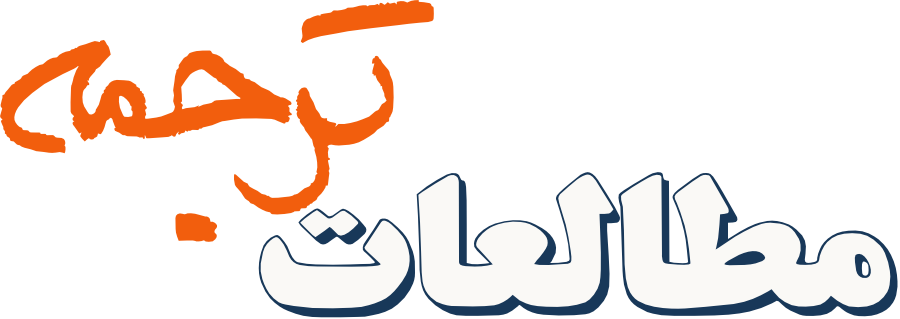تیپ، عملکرد شخصیتی و رفتار ویرایشی مترجمان
چکیده
شخصیت مترجمان میتواند به درک بهتر اثرات تیپها و عملکردهای شخصیتی در ترجمه کمک کند. در این راستا، مطالعة حاضر بهدنبال شناسایی عملکردهای شخصیتی غالب در مترجمان بهعنوان ویراستار و روشن کردن رابطة بین عملکردهای شخصیتی مترجمان آزاد و رفتار ویرایشی آنها است. بدین منظور، پرسشنامهای متشکل از سه بخش اطلاعات زمینهای، رفتار ویرایشی و تست شخصیتی MBTI با 207 مترجم آزاد شرکتکننده در پژوهش تهیه شده است. برای تجزیه و تحلیل دادهها، تحلیل عاملی اکتشافی (EFA) و آزمونهای آماری متعاقب انجام شد. با توجه به نتایج، بین تیپهای شخصیتی، رفتارهای ترجمهای و ویرایشی شرکتکنندگان بهجز زمینههای کاری ترجمه، مکثهای مکرر، و میزان آشنایی آنها با موضوع مورد ترجمه، همبستگی معناداری وجود نداشت.
کلمات راهنما:
تیپ¬های شخصیتی مترجمان، رفتارهای ویرایشی، عملکردهای شخصیتیمراجع
Antunović, G., & Pavlović, N. (2011). Here and now: Self-revision in student translation processes from L2 and L3. Across Languages and Cultures, 12(2), 213–234. https://doi.org/10.1556/Acr.12.2011.2.5
Artino, A. R., La Rochelle, J. S., Dezee, K. J., & Gehlbach, H. (2014). Developing questionnaires for educational research: AMEE Guide No. 87. Medical Teacher, 36(6), 463–474. https://doi.org/10.3109/0142159X.2014.889814
Asadi, P., & Séguinot, C. (2005). Shortcuts, strategies and general patterns in a process study of nine professionals. Meta, 50(2), 522–547. https://doi.org/10.7202/010998ar
Bell, R. T. (1991). Translation and translating: Theory and practice. Longman.
Carl, M., Dragsted, B., & Jakobsen, A. L. (2011). A taxonomy of human translation styles. Translation journal, 16(2), 155–168. http://translationjournal.net/journal/56taxonomy.htm
Carl, M., & Jakobsen, A. L. (2010). Relating production units and alignment units in translation activity data The 7th International Natural Language Processing and Cognitive Science Workshop (ICEIS 2010), Portugal.
Carminati, L. (2018). Generalizability in qualitative research: A tale of two traditions. Qualitative Health Research, 28(13), 2094–2101. https://doi.org/10.1177/1049732318788379
Choong, E. J., & Varathan, K. D. (2021). Predicting judging-perceiving of Myers-Briggs Type Indicator (MBTI) in online social forum. PeerJ, 9, e11382. https://doi.org/10.7717/peerj.11382
Dayton, D. (2003). Electronic editing in technical communication: A survey of practices and attitudes. Technical communication, 50(2), 192–205.
Dragsted, B., & Carl, M. (2013). Towards a classification of translation styles based on eye-tracking and key-logging data. Journal of the Writing Research, 5(1), 133–158.
Englund Dimitrova, B. (2005). Expertise and explicitation in the translation process. John Benjamins Publishing Company. https://doi.org/10.1075/btl.64
Ferguson, A. (2020). An introduction to personality types. Medium. Retrieved May 16, 2024 from https://spiderferg.medium.com/introduction-to-cognitive-functions-2c2916f4a643
Field, A. (2017). Discovering statistics using IBM SPSS statistics. SAGE Publications.
Gehlbach, H., Artino, A. R., Jr., & Durning, S. (2010). AM last page: Survey development guidance for medical education researchers. Acad Med, 85(5), 925. https://doi.org/10.1097/ACM.0b013e3181dd3e88
Hubscher-Davidson, S. (2009). Personal diversity and diverse personalities in translation: a study of individual differences. Perspectives, 17(3), 175–192. https://doi.org/10.1080/09076760903249380
Immonen, S. (2006). Translation as a writing process: Pauses in translation versus monolingual text production. Target. International Journal of Translation Studies, 18(2), 313–336. https://doi.org/10.1075/target.18.2.06imm
Jakobsen, A. L. (2002). Translation drafting by professional translators and by translation students. In G. Hansen (Ed.), Copenhagen studies in language (pp. 191–204). Samfundslitteratur.
Jakobsen, A. L. (2017). Translation process research. In J. W. Schwieter & A. Ferreira (Eds.), The handbook of translation and cognition (pp. 21–49). John Wiley & Sons Inc.
Kaiser, H. F. (1970). A second generation little jiffy. Psychometrika, 35(4), 401–415. https://doi.org/10.1007/BF02291817
Kaiser, H. F. (1974). An index of factorial simplicity. Psychometrika, 39(1), 31–36. https://doi.org/10.1007/BF02291575
Kasperavičienė, R., & Horbačauskienė, J. (2020). Self-revision and other-revision as part of translation competence in translator training. Journal of Language and Cultural Education, 8(1), 117–133. https://doi.org/10.2478/jolace-2020-0007
Künzli, A. (2005). What principles guide translation revision?: A combined product and process study. Translation norms: What is "normal" in the translation profession?, Portsmouth.
Künzli, A. (2007). Translation revision: A study of the performance of ten professional translators revising a legal text Doubts and directions in Translation Studies: Selected contributions from the EST Congress, Lisbon 2004, Amsterdam. digitalcollection.zhaw.ch/handle/11475/15101
Lehka-Paul, O. (2020). Personality matters: The translator's personality in the process of self-revision. Leuven University Press.
Lehka-Paul, O., & Whyatt, B. (2016). Does personality matter in translation? Interdisciplinary research into the translation process and product. Poznan Studies in Contemporary Linguistics, 52(2), 317–349. https://doi.org/10.1515/psicl-2016-0012
Li, D., Zhang, C., & He, Y. (2015). Project-based learning in teaching translation: Students’ perceptions. The Interpreter and Translator Trainer, 9(1), 1–19. https://doi.org/10.1080/1750399X.2015.1010357
Mossop, B. (1982). A procedure for self-revision. Terminology Update, 15(3), 6–9.
Mossop, B. (2014). Revising and editing for translators. Routledge. https://doi.org/10.4324/9781315158990
Neubert, A., & Shreve, G. M. (1992). Translation as text. Kent State University Press.
Piedmont, R. L. (2014). Inter-item Correlations. In A. C. Michalos (Ed.), Encyclopedia of quality of life and well-Being research (pp. 3303–3304). Springer Netherlands. https://doi.org/10.1007/978-94-007-0753-5_1493
Reiss, K. (1971/2000). Type, kind and individuality of text: Decision making in translation. In L. Venuti (Ed.), The translation studies reader (pp. 160–171). Routledge.
Robert, I. S., & Van Waes, L. (2014). Selecting a translation revision procedure: do common sense and statistics agree? Perspectives, 22(3), 304–320. https://doi.org/10.1080/0907676X.2013.871047
Schmidt, S. J. (2016). Personality diversity: Extrovert and introvert temperaments. Journal of Food Science Education, 15(3), 73–74. https://doi.org/10.1111/1541-4329.12091
Shih, C. Y.-y. (2006). Revision from translators’ point of view: An interview study. Target. International Journal of Translation Studies, 18(2), 295–312. https://doi.org/10.1075/target.18.2.05shi
Shih, C. Y.-Y. (2013). Translators' end-revision processing patterns and maxims: a think-aloud protocol study. Arab World English Journal, 4(3), 31–44. https://discovery.ucl.ac.uk/id/eprint/1522466
Shih, C. Y.-Y. (2015). Problem-solving and decision-making in translation revision: Two case studies. Across Languages and Cultures, 16(1), 69–92. https://doi.org/10.1556/084.2015.16.1.4
Downloads
چاپشده
ارجاع به مقاله
شماره
نوع مقاله
DOR
مجوز
حق نشر 2024 Movahedeh Sadat Mousavi, Dr. Hussein Mollanazar

این پروژه تحت مجوز بین المللی Creative Commons Attribution-NonCommercial 4.0 می باشد.
Copyright Licensee: Iranian Journal of Translation Studies. This article is an open access article distributed under the terms and conditions of the Creative Commons Attribution–NonCommercial 4.0 International (CC BY-NC 4.0 license).





